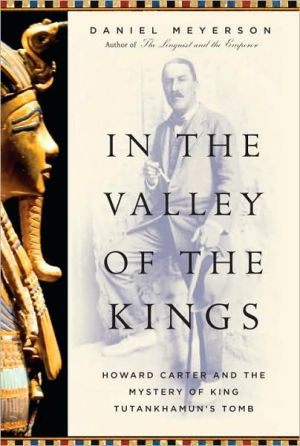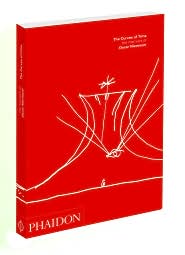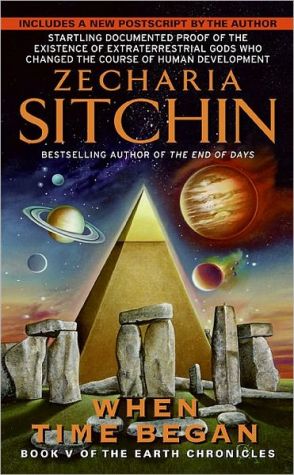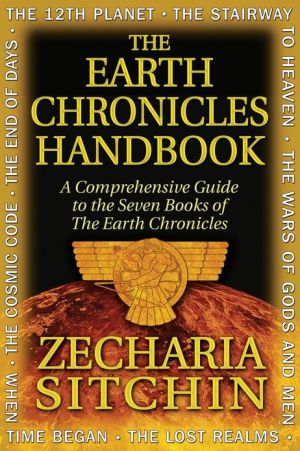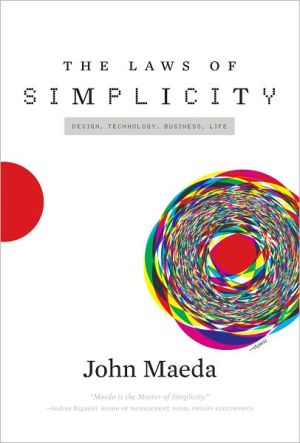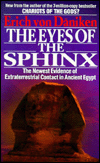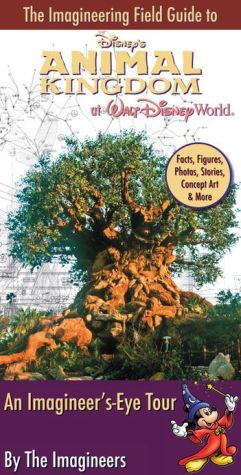In the Valley of the Kings: Howard Carter and the Mystery of King Tutankhamun's Tomb
In 1922, the British archaeologist Henry Carter opened King Tutankhamun’s tomb, illuminating the glories of an ancient civilization. And while the world celebrated the extraordinary revelation that gave Carter international renown and an indelible place in history, by the time of his death, the discovery had nearly destroyed him. Now, in a stunning feat of narrative nonfiction, Daniel Meyerson has written a thrilling and evocative account of this remarkable man and his times.\ Carter began...
Search in google:
In 1922, the British archaeologist Henry Carter opened King Tutankhamun’s tomb, illuminating the glories of an ancient civilization. And while the world celebrated the extraordinary revelation that gave Carter international renown and an indelible place in history, by the time of his death, the discovery had nearly destroyed him. Now, in a stunning feat of narrative nonfiction, Daniel Meyerson has written a thrilling and evocative account of this remarkable man and his times.Carter began his career inauspiciously. At the age of seventeen–unknown, untrained, untried–he was hired as a copyist of tomb art by the brash, brilliant, and boldly unkempt father of modern archaeology, W. F. Petrie. Carter struck out on his own a few years later, sensing that something amazing lay buried beneath his feet, waiting for him to uncover it.But others had the same idea: The ancient cities of Egypt were crawling with European adventurers and their wealthy sponsors, each hoping to outdo the others with glittering discoveries–even as growing nationalist resentment against foreigners plundering the country’s most treasured antiquities simmered dangerously in the background.Not until Carter met up with the risk-taking, adventure-loving occultist Lord Carnarvon did his fortunes change. There were stark differences in personality and temperament between the cantankerous Carter and his gregarious patron, but together they faced down endless ridicule from the most respected explorers of the day. Seven dusty and dispiriting years after their first meeting, their dream came to astonishing life. But there would be a price to pay for thispartnership, their discovery, and the glory and fame it brought both men–and the chain of events that transpired in the wake of their success remains fascinating and shocking to this day.An enthralling story told with unprecedented verve, In the Valley of the Kings is a tale of mania and greed, of fame and lost fortune, of history and its damnations. As he did in The Linguist and the Emperor, Daniel Meyerson puts his exciting storytelling powers on full display, revealing an almost forgotten time when past and present came crashing together with the power to change–or curse–men’s lives.The Washington Post - Alexander F. RemingtonCarter, a low-born, little-educated, lonely and slightly crazed British artist who became one of the greatest Egyptologists of his day, is a compelling central character, and his eccentric mentor William Flinders Petrie also commands attention. Carter found the greatest treasure under the desert, but never found peace: Tut's true curse was to be so well hidden that only an eternally dissatisfied man would have the patience to discover his tomb. Meyerson brings to life the excitement of that hunt.
Chapter One\ New Year’s Day 1901 Deir el-Bahri, Southern Egypt\ \ Everyone who was anyone was in the desert that day. an excited crowd had gathered beneath the stark cliffs that rose dramatically behind the two ancient temples. One was dedicated to the soul of Queen Hatshepsut, 1550 bc, and the even older one next to it, Mentuhotep I’s, had stood there in the relentless sun for four thousand years.\ It was a place of great desolation and silence. Behind the temples towered the lifeless cliffs; and before them, the blinding white sand stretched endlessly to meet the empty sky. Djeser djeseru, the ancients called it, the holy of holies, the dwelling place of Meret?singer, the cobra goddess: She Who Loves Silence.\ And it was here that the noisy crowd descended, chattering, speculating, filled with the nervous restlessness of modernity. In search of sensation, treasure, beauty—how could the goddess bear them as she watched from her barren heights?\ First and foremost was the British viceroy, Lord Cromer, a man whose word was law in Egypt. He’d dropped everything, leaving Cairo in the midst of one of Egypt’s endless crises. After ordering his private train, he’d traveled five hundred miles south, then taken a boat across the Nile, and then a horse-drawn calèche out toward the desert valley. The price of Egyptian cotton had plummeted on the world market, pests were ravaging the crops, and starvation stalked the countryside. But what did that matter next to the fact that a royal tomb had been discovered? After months of laborious excavation, the diggers had finally reached the door of a burial chamber with its clay seals still intact—and His Lordship wanted to be present at the opening.\ As did an assortment of idle princes, pashas, and high-living riffraff from the international moneyed scene . . . along with the usual hangers-on of the very rich: practitioners of the world’s oldest profession. Which in Egypt didn’t refer to—to what it usually does, but meant grave robbers (or archaeologists, as they are more politely known).\ To dig with any success (“to excavate,” in the polite lingo), one needed knowledge. And one needed money—a great deal of it.\ Thus, they often came in pairs, the archaeologists and their sugar daddies. There were famous “couples”—inseparables for all their differences of temperament and background. For example, looking back on turn-of-the-century Egyptology, can one think of the American millionaire Theodore Davis apart from the young Cambridge scholar Edward Ayrton?\ Together they discovered a long list of tombs and burial shafts, Pharaoh Horemheb’s, Pharaoh Siptah’s, and “the golden tomb” (KV #56)* among them. As well as the mysterious Tomb Kings Valley #55—and the animal tombs (#50, #51, and #52): the mummified and bejeweled pets of Amenhotep II. The beloved crea-\ * The tombs in the Valley of the Kings are numbered from one to sixty-two. The general rule is that tombs with lower numbers have either lain open since antiquity or were discovered earlier than those higher in the sequence. The tombs in the adjoining valleys (the Valley of the Queens, the Nobles, the West Valley, and Deir el-Bahri) are referred to by their own numbering sequences. DB #320, for example, refers to tomb number 320 from the Deir el-Bahri sequence. It is to John Gardner Wilkinson that we owe the numbering system still in use. In the 1820s and 1830s, Wilkinson lived in Gurna, at the edge of the Valley of the Kings, where he studied those tombs that were accessible and devised his numbering system.\ tures had been stripped of their jewelry by ancient robbers who had even decided to create a “joke”—perhaps the oldest in existence—leaving pharaoh’s monkey and dog face-to-face. Which was how Davis and Ayrton found them some three thousand years later: locked in an eternal stand-off.\ The two men, the millionaire and the scholar, made a striking picture: Davis, headstrong, determined, unwilling to be denied anything he wanted. The entrepreneur stood erect, staring down the camera in his flared riding pants and polished boots and gray side whiskers; Ayrton stood next to him, athletic, boyish, shy, a straw boater tilted at a rakish angle as he smiled absentmindedly, staring out over the desert. If it wasn’t exactly a marriage made in heaven—the two had their ups and downs—still their partnership produced significant results.\ Or take Howard Carter and Lord Carnarvon, another such couple. Carter, irascible to the point of being rabid when the fit was on him, intense, brooding, obsessed. With almost no formal education and a humble background, he was the quintessential outsider whose artistic ability was his one saving grace. Where would he have been without his Earl of Carnarvon, the lovable “Porchy”—bon vivant heir to a thirty-six-thousand-acre estate who came to the excavations supplied with fine china, table linen, and the best wines?\ Though they tried to pass themselves off as patrons of the arts and archaeology, the truth was that these high rollers were not selfless. They paid for an excavation because they stood to gain a great deal from it, more than they would have at the racetracks and roulette tables of their usual watering holes. The laws—or, better, the rules of the game—in Egypt allowed for an equal division of whatever was found: statues, jewelry, papyri. The fledgling Egyptian Museum at Cairo got half the take, the other half went to the wealthy diggers. It was this prospect that drew the British earls and American millionaires to the remote desert wadis with their magnificent treasures . . . and their ancient curses and gods.\ There was, however, one exception in this high-stakes game, the wild card in the deck: an intact royal burial. A pharaoh’s tomb or a queen’s sepulcher undisturbed since the time of its sealing. In the case of such a discovery, all bets were off and the rules changed. In theory, everything went to the Egyptian Museum—though what would happen in practice no one knew, since up to that time such a discovery had never been made. What was more, it was such a remote possibility that those in the know discounted it. The tombs found so far had all been at least partially plundered in antiquity.\ But this discouraged no one, since a plundered tomb could be astonishing enough. What had been worthless to the ancient thieves was often worth a fortune to their modern counterparts. The early grave robbers concentrated on gold and silver, or on jars filled with costly perfumes and unguents. They would pour the oils into animal skins to be easily carried away, leaving behind exquisite works of art. They couldn’t have fenced the finely carved statues. Or the limestone and alabaster sarcophagi, the painted coffins and splendidly illustrated rolls of papyri. Such priceless leavings made the game well worthwhile (a game that in modern terms came to hundreds of thousands of British pounds, or American dollars, or French francs).\ Then, too, there were the accidental finds stumbled upon in such “plundered” tombs: amulets overlooked in the folds of mummy wrappings or jewelry dropped in the haste of an ancient getaway. A “worthless” crocodile mummy, brittle to the touch, would crack open to reveal a hundred-foot papyrus roll, a masterpiece of the calligrapher’s art. A mummified arm would be discovered—the arm of Queen Mernneith, broken from her body and thrust into a niche during the First Dynasty (3000 bc). Laden with wondrously worked golden bracelets, the arm had been plastered over by some hapless thief who’d never managed to return for his booty. His loss was his modern “brother’s” gain (the severe and Spartan W. Flinders Petrie, working over the supposedly exhausted Abydos site with a fine-tooth comb).\ With so much at stake, is it any wonder that Egypt was a place of feverish rumors and speculation? Competition was fierce: among private collectors, among dealers in antiquities (both real ones and forgeries), and among the great museums of the world. The Louvre, the British Museum, and the Metropolitan Museum of Art all had their unscrupulous representatives at work. Greedy, squabbling children, they were anxious to obtain the finest examples of ancient art: provenance known or unknown—no questions asked.\ Of course, they were all there in the desert on that hot, bright November day. The opening of an intact royal tomb was not an event they were likely to miss. Nor would the “father” of this naughty family overlook such an occasion: Gaston Maspero, the mudir, or director, of the Service des Antiquités, a devoted scholar whose job it was to keep his acquisitive children in check.\ Portly, middle-aged, unworldly—a French academic—Maspero had come to Egypt in 1881 to become the second director of the newly established service. His position as mudir had forced him quickly to learn the ins and outs of the shady antiquities markets.\ His first task had been a very “unacademic one”: to trace the source of a steady stream of treasure, recognizably from royal burials, that had been showing up on the market. With the help of a wealthy American collector (Charles Wilbour) and an agent working for both Russia and Belgium (Mustafa Aga Ayat), Maspero followed a torturous trail. It began with two leather strips, outer mummy wrappings, and led to a notorious grave-robbing family, the Abd er Rassuls.\ Maspero had its members “interrogated” roughly. For though he was soft-spoken and humane, when it came to saving antiquities he could be as hard as nails. He ordered a bastinado for the culprits, a beating on the soles of their feet. Ironically, it was a harsher method than the one used on the ancient grave robbers, who were merely lashed on the back to make them talk (the blows given by the hundred, one wound counting as five blows). The bastinado, though, besides causing the whole body to swell, created extreme mental anguish. It left Ahmad er Rassul, the brother who finally confessed, crippled for life (afterward, Maspero was clever enough to recruit him as a service inspector).\ The disclosures led to the discovery of a remote desert tomb known as the Deir el-Bahri cache—the hiding place of thirty royal mummies, among them Amenhotep I; Thutmosis I, II, and III; Seti I; Ramesses II and III; and the royal family of the priest-pharaoh Pinedjem. During the breakdown of order in Egypt (in the Twentieth and Twenty-first dynasties), the royal mummies had been taken from their tombs by priests striving to protect their sacred god-kings. Moved from place to place, they were finally reburied here, DB tomb #320.\ Here they had remained for three thousand years—and might have remained forever if not for some roaming Arabs. One idly threw a stone into a cleft in the face of the cliffs, and the hollow ringing echo alerted an er Rassul brother who was with them. Keeping his suspicions to himself, he frightened his companions with talk of demons and ghosts in the area. Then he and his brothers returned to investigate. As a result, the er Rassuls had been selling the tomb’s treasures bit by bit for over a decade.
\ Alexander F. RemingtonCarter, a low-born, little-educated, lonely and slightly crazed British artist who became one of the greatest Egyptologists of his day, is a compelling central character, and his eccentric mentor William Flinders Petrie also commands attention. Carter found the greatest treasure under the desert, but never found peace: Tut's true curse was to be so well hidden that only an eternally dissatisfied man would have the patience to discover his tomb. Meyerson brings to life the excitement of that hunt.\ —The Washington Post\ \ \ \ \ Publishers WeeklyMeyerson (The Linguist and the Emperor) delves into the career and psyche of Howard Carter, the British archeologist who in 1922 discovered the 3,300-year-old gold- and jewel-laden tomb of the boy king Tut. Lower-class and lacking a formal education, Carter worked with his father, a painter of animal portraits for the aristocracy. He was discovered and hired in 1892 by the Egyptian Exploration Fund to copy paintings, ancient inscriptions and friezes in Egypt's dark tombs. Carter debuted as an excavator under the tutelage of Flinders Petrie, the single-minded father of modern archeology, at Amarna, the capital of Tut's father. Intense, irascible, brooding and obsessed, Carter searched for Tut for seven years, funded by the fifth earl of Carnarvon, a bon vivant millionaire who came to excavations with fine china and table linens and who died from septic poisoning after nicking a mosquito bite while shaving. Although Meyerson favors a playful writing style that can be intrusive and rambling, his work is also well researched and entertaining, and brings to life the ancient pharaohs and their tumultuous reigns as well as the excavators who disturbed their eternal sleep. Photos. (May)\ Copyright © Reed Business Information, a division of Reed Elsevier Inc. All rights reserved.\ \ \ Library JournalThe subtitle here is misleading: Meyerson devotes only a small portion of his narrative to the discovery and clearance of Tutankhamun's tomb, with no suggestion of a mystery. Instead, he focuses on Howard Carter's early career and his eventual partnership with Lord Carnarvon, which led to their excavating in the Valley of the Kings. The reader is introduced to late 19th- and early 20th-century Egypt, when scientific excavation was in its infancy. Ancient Egypt is Meyerson's avocation (his M.A. is in comparative literature), and he writes in a popular style for the nonspecialist. Unfortunately, there are a number of inaccuracies, e.g., Upper Egypt did not include Nubia, a foreign land that came under Egyptian control when Egypt was strong; "upriver" on the Nile is south toward its source, not north; and the approach to Hatshepsut's temple was not "sphinx-lined" when Carter worked there. An optional choice for general readers, who might prefer Thomas Hovings's 1978 tell-all Tutankhamun: The Untold Story. (Most illustrations, map, family trees, and index not seen.)\ —Edward K. Werner\ \ \ \ \ \ Kirkus ReviewsA sprightly look at the grand era of tomb plundering. Meyerson (The Linguist and the Emperor: Napoleon and Champollion's Quest to Decipher the Rosetta Stone, 2004, etc.) presents an enjoyable portrait of the megalomaniacal British artist and antiquities excavator Howard Carter (1874-1939), whose discovery of King Tut's tomb in 1922 became the greatest find in the fabled Valley of the Kings and marked the culmination of years of dogged work and punishing setbacks. In Meyerson's digressive study, which dashes erratically among the movements of the various players, Carter emerges as an irascible, determined, brilliant man who truly cherished the ancient art and artifacts he unearthed-that they also fetched a good price on the antiquities market was certainly appealing as well. A largely uneducated son of a working-class family, Carter learned to sketch and paint from his artist father, and got his break at age 17 when he was sent to Egypt to work as an apprentice copyist at the Beni Hasan tombs under the aegis of William Flinders Petrie, "the father of modern archaeology." Meyerson embarks on a dizzying exegesis of the reign of renegade pharaoh Akhenaton-who ruled during the 1300s BCE and was married to Nefertiti-his son Tut and their mutable entombments. The author also scrolls through the nascent field of Egyptology. Only after his partnership with his wealthy patron Lord Carnarvon did Carter finally make his life's discovery. The many years prior were plagued by fruitless digging, a world war and the suspicion-by everyone but Carter-that the Valley of the Kings had already been exhausted of its booty. Even after the Tut discovery, Carter was denied access and credit. Meyerson makes avaliant case for this strange, compelling character in a breezy gambol through the annals of Egyptology.\ \
